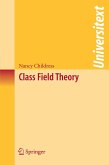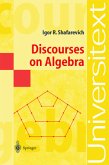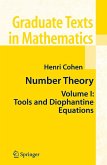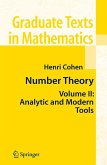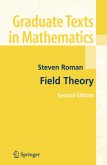This translation of the 1987 German edition is an introduction into the classical parts of algebra with a focus on fields and Galois theory. It discusses nonstandard topics, such as the transcendence of pi, and new concepts are defined in the framework of the development of carefully selected problems. It includes an appendix with exercises and notes on the previous parts of the book, and brief historical comments are scattered throughout.
From Math Reviews: "This is a charming textbook, introducing the reader to the classical parts of algebra. The exposition is admirably clear and lucidly written with only minimal prerequisites from linear algebra. The new concepts are, at least in the first part of the book, defined in the framework of the development of carefully selected problems. Thus, for instance, the transformation of the classical geometrical problems on constructions with ruler and compass in their algebraic setting in the first chapter introduces the reader spontaneously to such fundamental algebraic notions as field extension, the degree of an extension, etc... The book ends with an appendix containing exercises and notes on the previous parts of the book. However, brief historical comments and suggestions for further reading are also scattered through the text."
Hinweis: Dieser Artikel kann nur an eine deutsche Lieferadresse ausgeliefert werden.
From Math Reviews: "This is a charming textbook, introducing the reader to the classical parts of algebra. The exposition is admirably clear and lucidly written with only minimal prerequisites from linear algebra. The new concepts are, at least in the first part of the book, defined in the framework of the development of carefully selected problems. Thus, for instance, the transformation of the classical geometrical problems on constructions with ruler and compass in their algebraic setting in the first chapter introduces the reader spontaneously to such fundamental algebraic notions as field extension, the degree of an extension, etc... The book ends with an appendix containing exercises and notes on the previous parts of the book. However, brief historical comments and suggestions for further reading are also scattered through the text."
Hinweis: Dieser Artikel kann nur an eine deutsche Lieferadresse ausgeliefert werden.
From the reviews:
"This is the faithful English translation of the German textbook 'Einführung in die Algebra: Teil I' by F. Lorenz ... . this introduction to classical abstract algebra quickly became one of the most popular texts ... . this outstanding textbook has been brought about by Springer Verlag, with some further improvements and in modern printing. ... the author offers quite a number of interesting methodological approaches, extra topics, and arithmetical applications. ... The present English edition is enhanced by a carefully compiled index of notation." (Werner Kleinert, Zentralblatt MATH, Vol. 1087, 2006)
"This textbook is a translation of the 1987 German edition. It is an introduction into the classical parts of algebra with a focus on fields and Galois theory. The clear and well written exposition requires only some basics from linear algebra. ... The book ends with an appendix containing exercises and notes on the previous parts of the book. It also includes brief historical comments. It can be highly recommended." (A. Winterhof, Internationale Mathematische Nachrichten, Issue 206, 2007)
"Algebra I: Fields and Galois Theory is ... a complete algebra course, including both undergraduate and graduate topics. ... uses Galois theory as a guiding line that leads the reader to excursions into arithmetic groups, rings, and of course fields. ... the choice of topics and their organization are excellent and provide a unifying view of most of algebra. In all, Lorenz's book is a wonderful reference for both teachers and researches, and can be used with much profit for independent study by hard-working students." (Luiz Hendrique de Figueiredo, MathDL, July, 2008)
"This is the faithful English translation of the German textbook 'Einführung in die Algebra: Teil I' by F. Lorenz ... . this introduction to classical abstract algebra quickly became one of the most popular texts ... . this outstanding textbook has been brought about by Springer Verlag, with some further improvements and in modern printing. ... the author offers quite a number of interesting methodological approaches, extra topics, and arithmetical applications. ... The present English edition is enhanced by a carefully compiled index of notation." (Werner Kleinert, Zentralblatt MATH, Vol. 1087, 2006)
"This textbook is a translation of the 1987 German edition. It is an introduction into the classical parts of algebra with a focus on fields and Galois theory. The clear and well written exposition requires only some basics from linear algebra. ... The book ends with an appendix containing exercises and notes on the previous parts of the book. It also includes brief historical comments. It can be highly recommended." (A. Winterhof, Internationale Mathematische Nachrichten, Issue 206, 2007)
"Algebra I: Fields and Galois Theory is ... a complete algebra course, including both undergraduate and graduate topics. ... uses Galois theory as a guiding line that leads the reader to excursions into arithmetic groups, rings, and of course fields. ... the choice of topics and their organization are excellent and provide a unifying view of most of algebra. In all, Lorenz's book is a wonderful reference for both teachers and researches, and can be used with much profit for independent study by hard-working students." (Luiz Hendrique de Figueiredo, MathDL, July, 2008)



